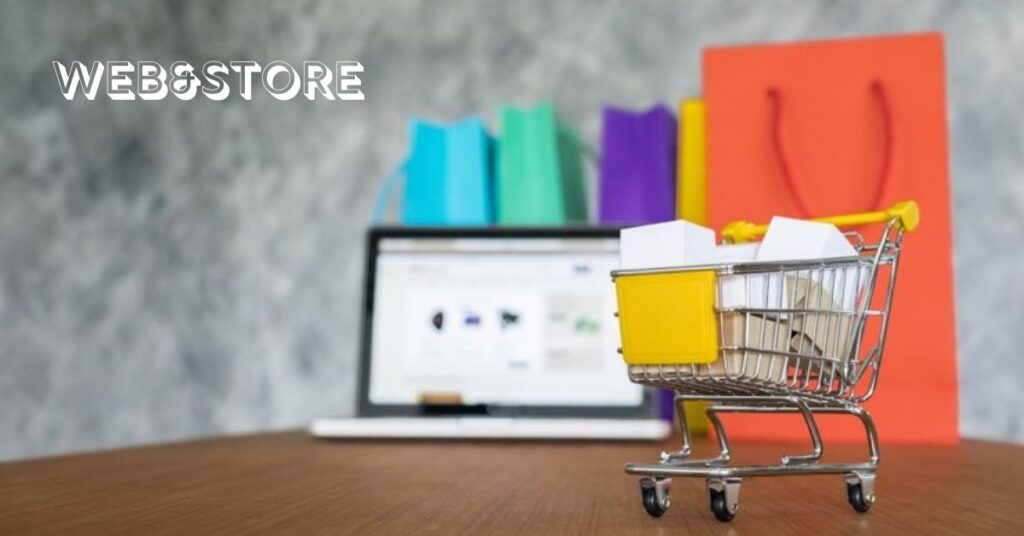In today’s fast-paced retail landscape, the line between online and offline shopping is becoming increasingly blurred. Consumers no longer see a distinction between browsing a website and walking into a physical store—they expect a seamless, unified experience across all channels. This is where the concept of Web&Store comes into play. By integrating online and offline retail experiences, businesses can create a cohesive journey that meets the evolving demands of modern shoppers. In this article, we’ll explore the importance of Web&Store integration, the strategies to achieve it, and the benefits it brings to both retailers and consumers.
The Evolution of Retail: From Brick-and-Mortar to Web&Store
The retail industry has undergone a massive transformation over the past few decades. Gone are the days when shopping was limited to physical stores. The rise of e-commerce platforms like Amazon and Shopify revolutionized the way people shop, offering convenience, variety, and competitive pricing. However, as online shopping grew, many brick-and-mortar stores struggled to keep up.
But the story doesn’t end there. Today, the most successful retailers are those that have embraced the Web&Store model, blending the best of both worlds. This approach recognizes that consumers don’t think in terms of “online” or “offline”—they simply want a smooth, consistent experience, whether they’re browsing a website on their phone or trying on clothes in a store. By integrating these channels, retailers can meet customers wherever they are and provide a more personalized, engaging shopping journey.
Why Web&Store Integration Matters in Modern Retail
The importance of Web&Store integration cannot be overstated. In a world where consumers are constantly switching between devices and channels, businesses that fail to provide a unified experience risk losing customers to competitors. Here are some key reasons why Web&Store integration is crucial:
- Customer Expectations: Modern shoppers expect a seamless experience across all touchpoints. They want to browse products online, check availability in-store, and have the option to pick up their purchases the same day. Web&Store integration makes this possible.
- Increased Sales: By connecting online and offline channels, retailers can drive more sales. For example, a customer who discovers a product online might visit the store to see it in person, leading to a purchase they might not have made otherwise.
- Data-Driven Insights: Integrating Web&Store allows businesses to collect and analyze data from both channels. This provides valuable insights into customer behavior, preferences, and purchasing patterns, enabling more targeted marketing and personalized experiences.
- Brand Consistency: A unified Web&Store strategy ensures that your brand message, visuals, and customer experience are consistent across all platforms. This builds trust and loyalty among customers.
Key Strategies for Successful Web&Store Integration
Achieving seamless Web&Store integration requires careful planning and execution. Here are some strategies to help retailers bridge the gap between online and offline channels:
1. Unified Inventory Management
One of the biggest challenges in Web&Store integration is managing inventory across multiple channels. A unified inventory management system ensures that stock levels are updated in real-time, whether a product is sold online or in-store. This prevents overselling, reduces stockouts, and improves the overall customer experience.
2. Click-and-Collect Services
Click-and-collect, also known as “buy online, pick up in-store” (BOPIS), is a popular Web&Store strategy. It allows customers to shop online and pick up their purchases at a nearby store. This not only saves on shipping costs but also drives foot traffic to physical locations, increasing the likelihood of additional in-store purchases.
3. Omnichannel Marketing
Omnichannel marketing involves creating a cohesive marketing strategy that spans online and offline channels. This could include personalized email campaigns, social media ads, in-store promotions, and loyalty programs. The goal is to engage customers at every stage of their journey, regardless of where they interact with your brand.
4. Seamless Customer Experience
From browsing to checkout, the customer experience should be seamless across all channels. This means offering features like online reservations, in-store returns for online purchases, and consistent pricing. Retailers should also invest in training staff to provide a high level of service that complements the online experience.
5. Leveraging Technology
Technology plays a crucial role in Web&Store integration. Tools like customer relationship management (CRM) systems, point-of-sale (POS) software, and mobile apps can help bridge the gap between online and offline channels. For example, a mobile app could allow customers to scan products in-store for more information or access exclusive discounts.
The Role of Data in Web&Store Integration
Data is the backbone of any successful Web&Store strategy. By collecting and analyzing data from both online and offline channels, retailers can gain a deeper understanding of their customers and make more informed decisions. Here’s how data can be used to enhance Web&Store integration:
- Customer Insights: Data can reveal valuable insights into customer behavior, such as preferred shopping channels, frequently purchased items, and average spend. This information can be used to tailor marketing campaigns and improve the overall shopping experience.
- Personalization: With access to customer data, retailers can offer personalized recommendations, promotions, and content. For example, an online shopper who frequently buys running gear might receive targeted ads for new arrivals in that category.
- Performance Tracking: Data allows retailers to track the performance of their Web&Store initiatives. Metrics like online-to-offline conversion rates, in-store pickup adoption, and cross-channel sales can help identify areas for improvement.
Challenges of Web&Store Integration and How to Overcome Them
While the benefits of Web&Store integration are clear, it’s not without its challenges. Here are some common obstacles and how to address them:
1. Technology Limitations
Integrating online and offline systems can be complex, especially for smaller retailers with limited resources. To overcome this, businesses should invest in scalable, user-friendly technology solutions that can grow with their needs.
2. Organizational Silos
In many companies, online and offline teams operate independently, leading to disjointed strategies. Breaking down these silos and fostering collaboration between teams is essential for successful Web&Store integration.
3. Customer Adoption
Some customers may be hesitant to adopt new Web&Store features, such as in-store pickup or mobile payments. Retailers can encourage adoption by promoting these services through marketing campaigns and offering incentives like discounts or free shipping.
Real-World Examples of Successful Web&Store Integration
Many brands have successfully implemented Web&Store strategies to enhance the customer experience and drive sales. Here are a few examples:
1. Nike
Nike’s Web&Store strategy includes features like online reservations, in-store pickup, and a mobile app that integrates with its physical stores. The app allows customers to scan products in-store for more information, access exclusive content, and even book appointments with fitness experts.
2. Walmart
Walmart has embraced Web&Store integration with its “Pickup Today” service, which allows customers to order products online and pick them up at a nearby store within hours. The retailer has also invested in technology like self-checkout kiosks and mobile payment options to streamline the in-store experience.
3. Sephora
Sephora’s omnichannel approach includes features like virtual try-on tools, in-store beauty classes, and a loyalty program that rewards customers for both online and offline purchases. The brand’s mobile app also integrates with its physical stores, offering personalized recommendations and exclusive offers.
The Future of Web&Store: Trends to Watch
As technology continues to evolve, so too will the Web&Store model. Here are some trends to watch in the coming years:
- Augmented Reality (AR): AR technology will allow customers to visualize products in their own space before making a purchase, bridging the gap between online and offline shopping.
- Artificial Intelligence (AI): AI-powered tools will enable more personalized shopping experiences, from chatbots that assist with online purchases to smart mirrors in-store that recommend products based on customer preferences.
- Sustainability: Consumers are increasingly prioritizing sustainability, and retailers will need to integrate eco-friendly practices into their Web&Store strategies, such as offering reusable packaging or promoting in-store recycling programs.
Conclusion: Embracing the Web&Store Revolution
The future of retail lies in the seamless integration of online and offline channels. By adopting a Web&Store approach, businesses can meet the demands of modern consumers, drive sales, and build stronger brand loyalty. While the journey to Web&Store integration may come with challenges, the rewards are well worth the effort. As technology continues to advance, retailers that embrace this model will be well-positioned to thrive in the ever-changing retail landscape.
Whether you’re a small business or a global brand, now is the time to invest in Web&Store integration. By doing so, you’ll not only enhance the customer experience but also future-proof your business for years to come.
Read more: Crypto30x.com Ocean: Revolutionizing Blockchain Technology and Crypto Trading



